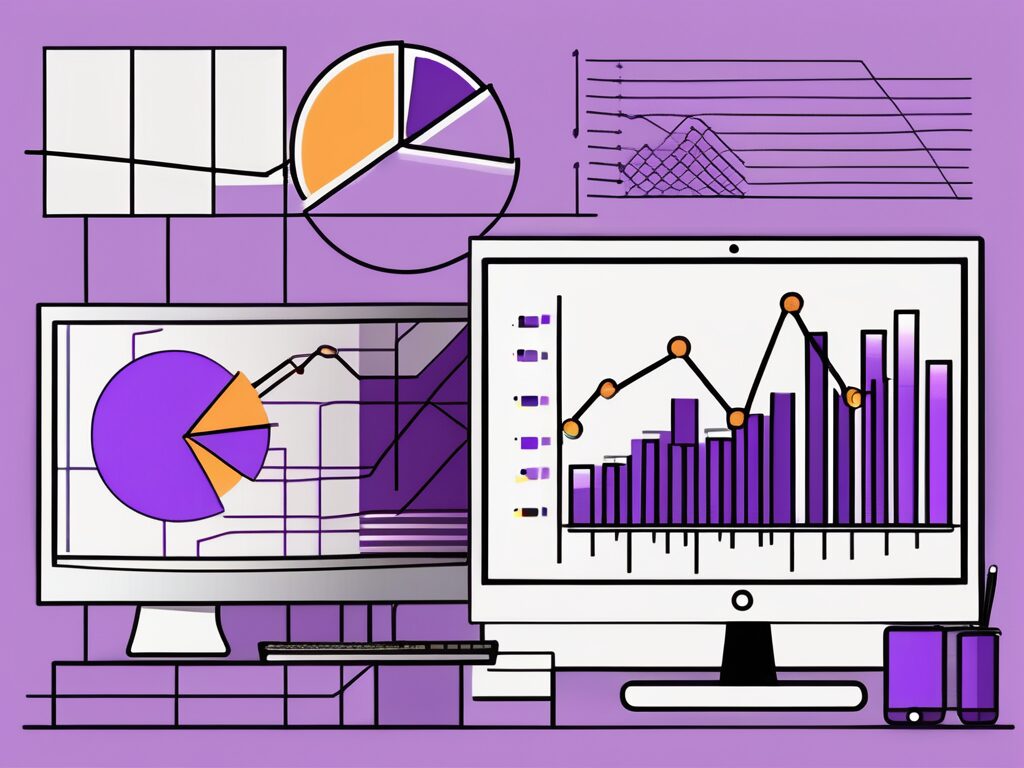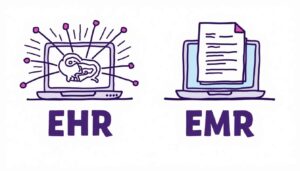BPO Analytics: Leveraging Data in Your Business Operations
20 Mar 2024 By: Maria Rush
Updated
Data analytics is all the rage in business these days. But what does it really mean? And why should you care for your business? In this article, we’ll cover the basics of BPO analytics, why it’s important, the various types out there, and how to make it work for you. Plus, we’ll talk about how it can guide decision-making, its impact on your BPO, and the challenges you might face.

What is BPO Analytics
Let’s start with what data analytics means. It’s about looking at raw data to find important information and make smart choices. This means gathering and studying data from different places to see patterns and connections. These findings can help BPOs run better, spot opportunities, and make decisions based on facts.
Embrace the future of BPO operations with AI and automation – explore now!
Importance of BPO Analytics
Data literacy is essential. It gives BPOs an edge by guiding smarter decisions and predictions. Whether it’s refining marketing strategies or streamlining operations.
Moreover, it’s not just about business efficiency. BPO analytics also enhances customer experiences. By delving into customer data, businesses can grasp preferences and behaviors. Allowing for personalized marketing and product offerings that foster stronger customer relationships.
Types of Data Analytics
Data analytics has three main types. Each type offers different insights based on how deep you want to go. It helps businesses make better decisions, streamline operations, and stay competitive.
Descriptive Analytics
Descriptive analytics looks at past data to answer, “What happened?” and “How did it happen?” It helps businesses spot trends and patterns. BPOs use it to track key performance indicators (KPIs) and monitor trends over time. By reviewing past data, companies can find patterns and unusual events. This helps guide future decisions.
Predictive Analytics
Predictive analytics uses past data to predict future outcomes. It answers, “What is likely to happen?” It helps businesses anticipate customer behavior, spot risks, and solve problems early. Advanced math and machine learning power these predictions. Companies can use it to improve marketing, forecast sales, and manage risks.
Diagnostic Analytics
Diagnostic analytics looks at data to find out why something happened. It connects the dots between events and outcomes. Like why response times slowed down or why customer satisfaction dipped. By finding the root cause, businesses can fix issues early and keep performance steady.
Prescriptive Analytics
Prescriptive analytics recommends actions for the best results. It answers, “What should we do next?” This type helps businesses make better decisions based on data. By testing different scenarios, companies can choose the best options. This improves efficiency, uses resources wisely, and boosts performance. In AliExpress Dropshipping, prescriptive analytics can guide decisions on pricing, product selection, and inventory management—helping store owners optimize profits and reduce operational risks.
Benefits of BPO in Data Analytics
Outsourcing data analytics offers many benefits. It provides expert skills without the cost of an in-house team. BPO companies scale quickly, delivering insights faster. This allows businesses to focus on core tasks while using advanced tools from the BPO provider.
Implementing Data Analytics in Your Business
Now that you know about the various data analytics types, let’s discuss putting them into action in your business.
BPO analytics is crucial for modern business strategies. While implementing it might seem daunting, it doesn’t have to be. With the right methods and tools, you can harness your data’s full potential and drive your business forward.
For those interested in deepening their data analytics skills, a free Introduction to R course is an excellent starting point. R programming is instrumental in mastering data analysis techniques which are crucial in business scenarios. From handling vectors and lists to practicing with real datasets, gaining proficiency in R enhances one’s ability to implement analytics strategically.
Steps to Incorporate BPO Analytics
Implementing BPO analytics in your operations needs a systematic approach. Here are steps you may follow:
- Define your business goals clearly before diving into BPO analytics. Knowing your objectives helps focus your efforts and ensures you collect the right data.
- Collect the data that aligns with your goals. Whether it’s customer information, sales figures, or website statistics. Ensure data quality and accuracy to avoid flawed analysis and misguided decisions.
- Choose BPO analytics tools that suit your needs and budget. Consider factors like ease of use, scalability, and compatibility with your systems. Research and expert advice can help you decide.
- Analyze and interpret the data using techniques like descriptive, diagnostic, predictive, or prescriptive analytics. Uncover patterns and trends for insights into your operations and customer behavior.
- Act on the insights gained from BPO industry analysis. Make informed decisions to optimize marketing, improve efficiency, or enhance customer experiences.
- Continuously monitor and refine your BPO analytics efforts. Regularly review data. Track key performance indicators. Adapt to changing business conditions for ongoing impact and relevance.
Choosing the Right BPO Analytics Tools
When picking BPO analytics tools, there’s no one-size-fits-all option. The right tools depend on your industry, budget, and analytics needs. Take time to choose tools that match your requirements.
Start by assessing your business needs and goals. Consider the data type and volume, and your team’s technical skills. Look for tools with easy interfaces, good data visuals, and advanced features. Also, think about scalability, integration, and support.
Research and reviews give insights into tool performance. But it’s wise to consult experts for tailored recommendations. Picking the right tools empowers your business. They can help you extract insights and make data-driven decisions.
Role of Analytics in BPO
Elevate your remote work game with essential small business tools!
Now that you have implemented data analytics in your business, let’s explore its role in decision making.
Enhancing Business Decisions with Data
Data analytics is your tool for smarter decisions. It lets you dive into data from different places to find key insights. This means you can spot trends in the market, set your prices just right, or make your customers happier. With data analytics, you’re making choices backed by solid facts, not just guesses.
Risks and Challenges in Data-Driven Decision Making
MIT’s Sloan Master of Business Analytics Capstone Project provides a unique glimpse into these challenges. They partnered students with companies seeking to solve business problems through data analytics. With 41 projects spanning 33 different companies. The article highlights three key questions driving analytics initiatives: identifying growth opportunities in specific geographic regions. Empowering front-line workers with data-driven support tools. And maximizing insights from large or unwieldy datasets. Through real-world examples from companies like JPMorgan Chase, Coca-Cola Southwest Beverages, and Wolters Kluwer. The article underscores the transformative potential of data analytics in addressing contemporary business challenges with innovative solutions.

Challenges and Best Practices
Outsourcing has challenges like data security. Sharing sensitive data requires strict privacy rules. Clear communication is key to avoid misalignment. To overcome this, companies should vet BPO partners, ensure data protection, and set clear performance metrics.
Measuring the Impact of Data Analytics on Business Performance
How can you tell if data analytics is actually helping your business? Let’s find out.
Key Areas of BPO Analytics
Understanding data analytics can feel overwhelming. It’s crucial to explain the results clearly and turn them into steps we can act on. Using charts, graphs, and dashboards helps make the data easier to grasp, allowing everyone involved to make smart choices.
- Return on Investment (ROI): Measure the financial impact of your data analytics initiatives.
- Customer Satisfaction: Monitor to gauge the effectiveness of your data-driven decisions.
- Operational Efficiency: Track improvements such as reduced costs or increased productivity.
- Market Share: Analyze changes in market share to understand the impact of your data-driven strategies.
Boost your customer service ROI with proven strategies.
Interpreting Data Analytics Results
Interpreting data analytics results can be a daunting task. It’s important to communicate the findings effectively and translate them into actionable insights. Seeing data in charts, graphs, and dashboards makes it easier for stakeholders to understand the results. It helps them make informed decisions.
Trending Now
An article from Alibaba delves into how data analytics is revolutionizing e-commerce, making it more human-centric. It sheds light on how this technology plays a crucial part in refining operations and boosting profits for online businesses. Using real-life scenarios and practical approaches, the article demonstrates how data analytics can simplify business processes, understand customer preferences, introduce innovative products, and facilitate better decision-making. It underscores the game-changing impact of data analytics in adapting to the ever-changing online business environment, ensuring businesses remain competitive in today’s data-driven world.
Conclusion
In conclusion, data analytics isn’t just a game of numbers and trends; it’s about using data smartly to propel your business ahead. With a grasp of the basics, the right tools in your toolkit, and decisions fueled by data, you can fully leverage data analytics to elevate your business to exciting new levels!
“When we have all data online it will be great for humanity. It is a prerequisite to solving many problems that humankind faces.”
~ Robert Cailliau, informatics engineer and computer scientist who helped to develop the World Wide Web
Ready to leverage the power of data analytics for your business but need the support to manage the influx of data and customer interactions? Look no further than HelpSquad BPO. Our skilled virtual assistants and 24/7 customer service team are equipped to handle your back-office tasks, customer support, and research needs, ensuring you can focus on interpreting data and making those crucial business decisions. With bilingual agents starting at just $8.50 per hour, you can boost your business’s efficiency without breaking the bank. Start your trial today and experience the HelpSquad difference in driving your business forward with data analytics.


